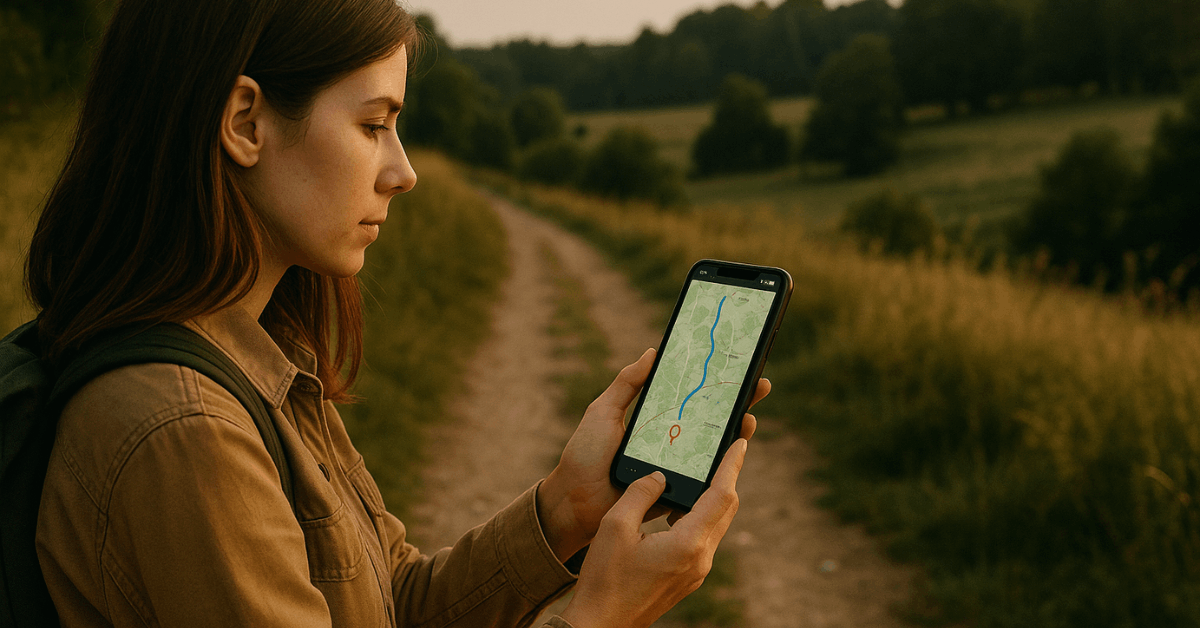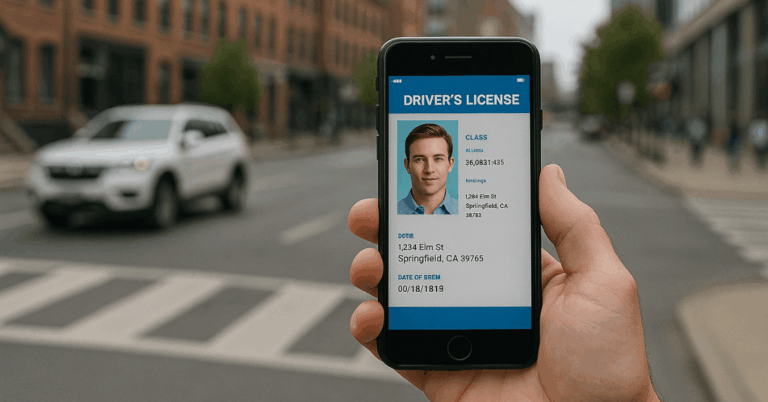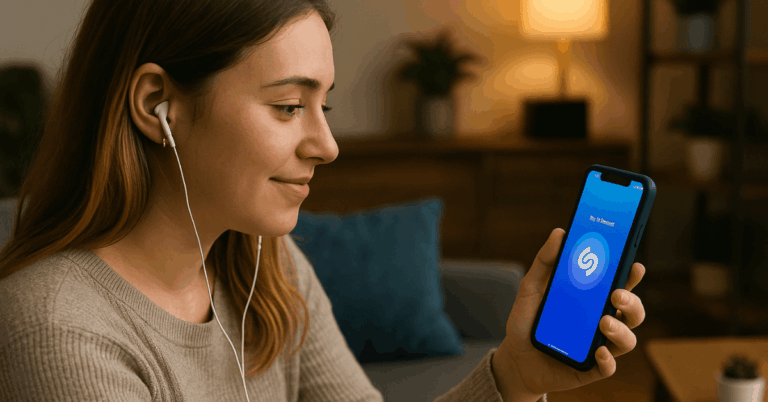You don’t always have internet access when you need to navigate. This is where offline GPS apps come in handy.
Using one lets you travel freely even in remote areas. You just need the right app and a little preparation.
Understanding Offline GPS: How It Works
Many people assume GPS requires the internet, but that’s not true. GPS uses satellite signals, not mobile data.

What you actually need are offline map files. These files let the app show your location and route without internet.
GPS vs. Mobile Data
GPS works through satellites, which send location signals to your phone. Mobile data is only needed to load maps in real time.
When you pre-download maps, your phone can still pinpoint your location without using data. That’s why offline apps are essential for trips in low-signal zones.
Benefits of Offline GPS Apps
Offline GPS apps save your mobile data and reduce roaming costs. They also perform better in remote places with poor signals.
With fewer background updates, they use less battery. Navigation continues smoothly even when signal drops.
Top Features of the Handy App
The best offline GPS app should be easy to use and reliable. The app we focus on offers a complete offline experience.
From downloading maps to finding points of interest, it works even without Wi-Fi or data. You can expect accurate directions in real time.
Offline Map Download
You can download full maps for cities, regions, or countries. These maps are stored on your phone and work without internet.
Downloads are fast over Wi-Fi, and storage can be managed within the app. It’s good to delete unused maps to save space.
Turn-by-Turn Voice Navigation
The app provides voice-guided navigation offline. You choose the language and voice settings before your trip.
This makes driving and walking easier without needing to look at your screen. Voice prompts are clear and accurate.
Search Without Connection
The app supports offline search for streets, places, and addresses. It doesn’t need an internet connection to find results.
You just type the name or category, and it shows what’s stored in the downloaded map. Keep in mind, results depend on what you’ve downloaded.
Offline Points of Interest (POIs)
This feature helps you find gas stations, ATMs, restaurants, and more. You can filter by category, distance, or rating.
Even in airplane mode, you can access these options. It’s useful when you don’t know the area.
Setting Up the App for Offline Use
Setting the app up properly ensures a smooth offline experience. You should prepare your maps and settings before going offline. This step saves you from last-minute stress. Here’s what you need to do.
Step-by-Step Guide to App Setup
You need to prepare the app before heading out without a connection. These setup steps will make sure everything works smoothly when you’re offline.
- Select the region or country you’ll visit in the app.
- Download the map over a Wi-Fi connection to save mobile data.
- Open the app and check if the map loads properly without internet.
- Test the search function to ensure it works in offline mode.
- Try entering a destination and follow the route instructions offline.
Make sure voice navigation activates even without a data signal.
Permissions and Location Settings
Allow the app to access your device’s location. Turn on location services in your phone’s settings.
Enable background activity if your phone restricts it. This keeps GPS tracking accurate even when the screen is off.
Testing the App Before Your Trip
Always test the app near home before your actual journey. Set it to airplane mode and see if everything works. Check search results, voice directions, and map loading. Fix any issues ahead of time.
Use Cases: When You Need Offline GPS
Offline GPS apps aren’t just for emergencies. They’re useful in many real-life situations.
Whether traveling, hiking, or just avoiding roaming fees, they offer a backup you can count on. Let’s look at common scenarios.
Traveling Abroad Without Roaming
Using mobile data abroad can be expensive. With offline maps, you avoid unexpected roaming charges.
You still get directions for driving, walking, or biking. The app runs independently of your mobile plan.
Hiking or Exploring Remote Areas
In rural areas or nature parks, signals are often weak. Offline GPS ensures you don’t get lost.
You can still find trails, campsites, and landmarks. The app keeps tracking your movement without needing a signal.
Driving Through Rural Zones
Offline navigation is essential for long drives through countryside or remote highways.
You won’t lose your route even if the signal disappears. Voice prompts continue as planned. You can trust the app to reroute when needed.
Tips to Maximize Your Offline GPS Experience
Optimizing the app ensures better performance and less hassle. A few key settings can improve battery life and map accuracy.
These simple adjustments help you get the most out of offline navigation. Review them before your next trip.
Save Battery While Navigating
Turn off mobile data and Wi-Fi while using GPS. Lower your screen brightness to extend battery life.
Use battery-saving mode if available in the app. Keep your phone plugged in during long drives.
Download Maps via Wi-Fi Only
Avoid large downloads over mobile data. Set the app to download maps on Wi-Fi only. Schedule updates while at home or in a hotel. This prevents unwanted data charges.
Keep Your Maps Updated
Update maps regularly to reflect new roads and places. The app will prompt you when updates are available.
It’s important to have the latest data for accurate navigation. Delete outdated maps if you need space.
Best Offline GPS Apps Compared
Not all GPS apps offer the same offline features. Some are better for driving, others for hiking or city use. Knowing the difference helps you choose the right one. Here’s a quick comparison.
Comparison of Popular Apps
- Google Maps: Free offline downloads, good for basic use.
- HERE WeGo: Excellent for driving, includes public transport.
- Sygic: Full offline functionality, paid features.
- Maps.me: Focused on walking and cycling routes.
Each has strengths, but not all offer the same offline support. Choose based on what features matter most.
Why This Handy App Stands Out?
The app discussed here combines ease of use with deep offline tools. It offers full offline maps, voice navigation, and POI search. The user interface is clean and beginner-friendly. It balances accuracy and usability.
Troubleshooting and Common Issues
Sometimes offline GPS apps run into problems. Fixing them is usually easy. Here are the most common ones and what to do. Don’t skip testing before your trip.
App Not Detecting GPS Signal
Make sure location services are enabled. Restart your phone and the app. Avoid using the phone indoors when testing. Clear any app restrictions that affect background usage.
Maps Not Downloading
Check if you have enough storage space. Ensure a stable Wi-Fi connection. Pause and resume downloads if stuck. Update the app to the latest version.
Voice Navigation Not Working
Download the correct voice file from settings. Turn up the volume or unmute the phone. Check if the voice language matches your device. Reinstall voice files if needed.
Safety and Accuracy Considerations
Offline apps aren’t perfect but can be very reliable. You need to keep maps current and stay aware of surroundings. A few precautions can make a big difference. Here are some best practices.
Ensure Map Data Is Recent
Old maps may miss road changes or new routes. Download the latest version before each trip. Some apps allow auto-updates on Wi-Fi. Always check the date of your stored maps.
Use with Other Tools
Offline apps work best with a compass app or printed map. You can also carry a power bank. Use the app’s route overview to double-check your path. Backup tools improve safety.
Always Be Ready to Navigate
You don’t need internet access to navigate accurately with a GPS offline app. It allows you to travel confidently even in areas with no mobile signal.
Just download the maps in advance and check your settings before leaving. Start using it now and stay on track wherever you go.












